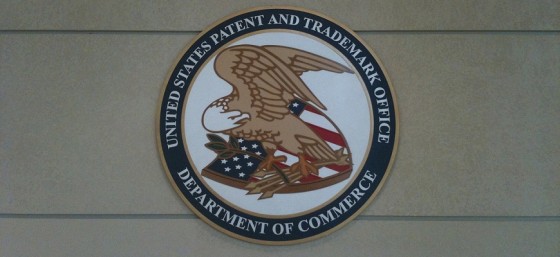
I’m going to say “no” a lot today. I’ve seen many trademark questions lately, many of which make me cringe.
Here’s what you need to know about trademarks. They are synonymous with branding. Your trademarks are the names, logos, slogans, etc. that you put on your products or services that differentiate you from the competition. They inform consumers about the origin and quality of the product or service.
When you apply to register a trademark, you have to tell the U.S. Patent and Trademark Office (USPTO) what you’re claiming as a trademark and on what products or services you’re using it. The USPTO won’t register your trademark if it’s too similar to a previously registered trademark. If they have a problem with your application, they’ll send you an Office Action with an explanation of the problem, and they give you 6 months to submit a response.
This is also why it’s possible for two companies to use the same trademark when they’re products and services are so different that no one would think they came from the same company, like Delta Airlines, Delta Faucet, and Delta Dental.
Onto the questions . . .
How would an Unregistered Trademark be Better for “Brand Image” than a Registered Trademark?
A trademark is a trademark regardless of whether you register it or not. What changes is the rights you get with your brand when it’s a registered trademark. Having a registered trademark gives you the ability to stop competitors from entering the marketplace in the U.S. while using a trademark that is confusingly similar to yours. (Trademark rights are limited by country. If you have a registered trademark in the U.S., that doesn’t mean someone couldn’t register the same trademark for the same goods somewhere else.)
When you don’t register your trademark, you only can get common law trademark rights based on the geographic area where you are using the mark in commerce. You won’t have the ability to stop a competitor from using the same or a confusingly similar trademark in another geographic area in the U.S. like you’d be able to do if you had a registered trademark.
Additionally, if you don’t register your mark, there’s a risk that your competitor will, which will limit your ability to use your trademark to the area established by your common law rights when the other mark was registered. This happened to the first Burger King restaurant. The first Burger King was “frozen” in its established area when the franchise registered the trademark. If the first Burger King company wanted to expand beyond that area, it must do so with a different trademark than “Burger King.”
If your company is going to license its trademark to others, having a registered trademark is more valuable that an unregistered trademark. For many companies, their most important asset is their intellectual property.
If I Want to Apply to Register a Trademark and There’s a Competitor That’s Already Registered a Similar Name, Will I have a Better Chance with the USPTO if I Apply to Register my Logo that Contains the Company Name?
Why do you want to a brand that’s similar to your competition? It baffles me when companies knowingly pick a name that’s like one that’s already in use. It makes wonder if the owners are trying to ride a competitors’ coattails (which is illegal) or if they don’t understand how branding works.
The purpose of having a trademark is to prevent consumer confusion. The USPTO does not want to grant companies the similar trademarks if they’re selling similar products or services.
For a lot of companies, I recommend filing the word mark for just their name (assuming it’s trademarkable) as well as the logo, because logos often change over time. The name of the product or company usually doesn’t.
The USPTO requires separate applications for the logo and the word mark if you want both as registered trademarks. When a logo contains words, those often are given more weight than the rest of the logo in terms of whether there’s confusion because that’s often the most prominent part of the logo. The logo components may help differentiate your trademark from the competition, but it may not be enough. You can always apply and see what happens.
Can I use a Cancelled Trademark if the Owner is still Manufacturing the Product?
When you do a search on the USPTO trademark database, it will show the trademarks that are “live” and “dead.” A dead trademark may be “abandoned” or “cancelled.” An abandoned trademark was one that was applied-for but never registered. A cancelled trademark was registered at one time but not anymore.
When a company has a cancelled trademark but is still using it, it likely means that they registered the trademark and did not file the renewal when it was due. The company still has common law trademark rights based on its geographic market.
It may be possible to use a cancelled mark that’s still in use as long as you’re not in the competitor’s established geographic market, but I usually don’t recommend it. It sounds like a situation where you’d be setting yourself up to get a cease and desist letter and/or sued for common law trademark infringement and unfair competition.
On the flip side, I have seen companies use trademarks that have been cancelled and the previous owner has long since stopped using the trademark or the previous owner went out of business. A few years ago, I saw popsicle companies doing this – claiming abandoned trademarks and bringing the product back to market.
Is it OK if my Trademark is Barely Different than Someone Else’s – Like Adding or Removing a Space or Adding a Word?
The key to whether your trademark is different enough is based on whether consumers will be confused. As such, the USPTO treats trademarks that look and sound the same as being the same. You can’t take a registered mark and change the spelling slightly and have a valid trademark for the same product or service.
When you take someone’s trademark and add a word to it, the USPTO will consider how similar the marks are. If the main part of the mark matches an existing registered mark for the same type of product or service, it’s less likely that the USPTO will register your trademark as well.
There is no equation or formula you can use to guarantee that your trademark application will be approved by the USPTO.
Can I File my Own Trademark Application?
Yes. You don’t have to be a lawyer to submit a trademark application to the USPTO, though I recommend using one. At the very least, it’s best to have a lawyer review the application before you submit it. I’ve run into too many people who submitted a trademark application by themselves for trademarks that aren’t registerable. They could have saved themselves time and money by consulting a lawyer.
Thanks for reading this post. If you liked this post and want to know more about my work, please subscribe to the Carter Law Firm newsletter where I share behind-the-scenes information and readers get exclusive access to me.



